Difference between Merge and Combine
The differences between Merge and Combine are as follows:
• In IDD, you can only merge two quilts at a time. You may combine any number of quilts and or datums together. You may however embed datums into a merge node after creation.
• To successfully merge two quilts, the quilts must physically intersect each other. This is not a requirement for combining quilts.
• A successful creation of a merge always results in a single quilt. Combining quilts only results in a single quilt if a one-sided boundary of one quilt matches with a one sided boundary of another quilt that it is being combined with. In this case, the one-sided boundaries are stitched together to form a single quilt.
• When the quilts of a combine node share a two-sided edge boundary, a Close connection exists between them at that boundary. If you transform one of those quilts, Creo Parametric attempts to re-construct the boundary in the new transformed location to maintain the connection between the two quilts. Creo Parametric does this by extending or trimming and re-intersecting the two quilts. This allows the connection to be retained even if the two quilts no longer touch after transformation. Reconstruction of the boundary is successful as long as the two quilts can be extended and or trimmed to create a new boundary that is topologically equivalent to the original configuration.
|
|
Observe the changes in the Geometry and Topology Structure Tree for the examples.
|
Example 1
The following example illustrates the successful update of a close connection of a combine node.
The hole quilt and base quilt are joined by a close connection of a combine node.

The hole quilt is translated in the downward direction so that it no longer touches the base quilt.

When completing the transformation, the close connection is updated successfully by extending the sides of the hole quilt to meet the original boundary on the base quilt.

A merge connection remembers and maintains the original geometry of each quilt. If you transform one of the quilts of the merge, the connection recalculates the intersection of the two quilts based on their original geometry and their new relative positions.
Example 2
The following example illustrates the successful update to a merge connection.
In the following figure, the hole quilt is merged to the base quilt.
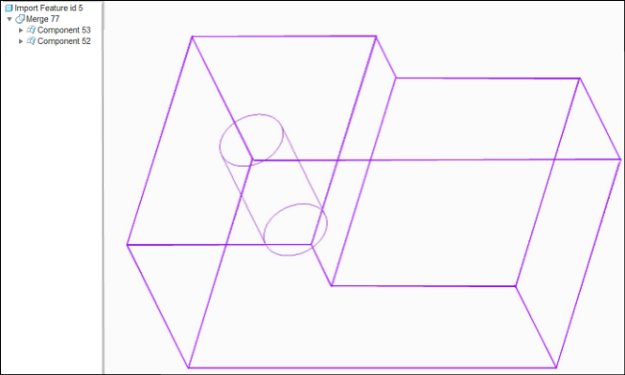
The hole quilt is translated so that its geometry now overlaps a different surface of the base quilt.

The merge connection updates successfully. The hole and base quilts are re-intersected, and updated merge geometry is created.

If the boundary created by trimming, extending, or re-intersecting the quilts of a combine cannot generate a topologically equivalent boundary, then the close connection fails. What this actually means is that only the surfaces that were involved in the original boundary between the two quilts may be trimmed or extended to re-create the boundary, and no surface may be completely removed. If a connection fails in a combine node, the combine node is not removed; you simply have two physically disconnected quilts in the combine. They are still logically joined.
Example 3
The following example illustrates a translation that causes a close connection of a combine node to fail. Note this is the same case for which the merge connection successfully updated in Example 2.
The hole quilt is joined to the base quilt by a close connection defined by the combine node.
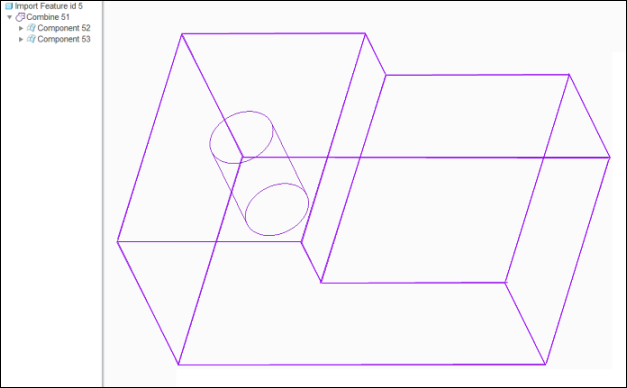
The hole quilt is translated to the right, well beyond the perimeter of the planar surface on the base quilt with which it shared its original connection boundary.

After exiting the transform tool, the close connection of the combine fails because the original surfaces of each quilt that shared the original boundary can no longer be extended, trimmed, or re-intersected to re-create the boundary. Note that even though the connection is broken, the structure in the GTS tree does not change. The quilts are still logically joined even though they are no longer physically joined.

If modifications are made such that the quilts of a merge node no longer intersect, the merge fails and the quilts are restored to their original, non-intersected geometry and become base nodes in the GTS tree. Similarly, if you manually delete the merge connection, the quilts are restored to their original, non-intersected geometry and become base nodes in the GTS tree.
Example 4
The following example illustrates a translation that causes the failure of a merge connection. Note it is the same case that the Close connection of the combine node successfully updated in Example 1.
The hole quilt is merged with the base quilt. Originally, the boundary of the hole quilt lay on the planar surface of the base quilt, so the merged geometry of the hole represents the original hole quilt’s geometry.
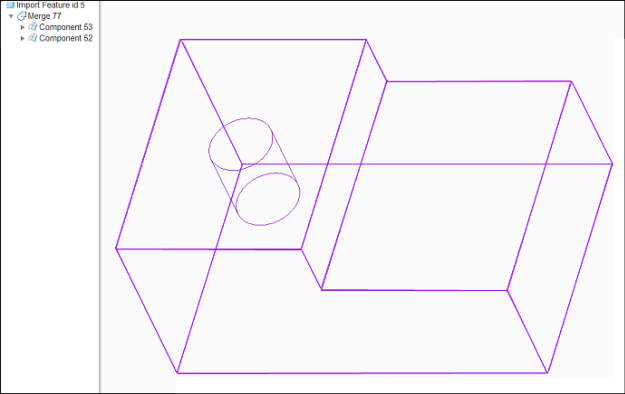
The hole quilt is translated in the downward direction so that it no longer intersects the base quilt.

Since there is no longer an intersection between the hole and base quilts, the merge connection fails. Note that when a merge connection fails, the GTS tree is change. The merge node is removed and its sub-nodes become base-level nodes.
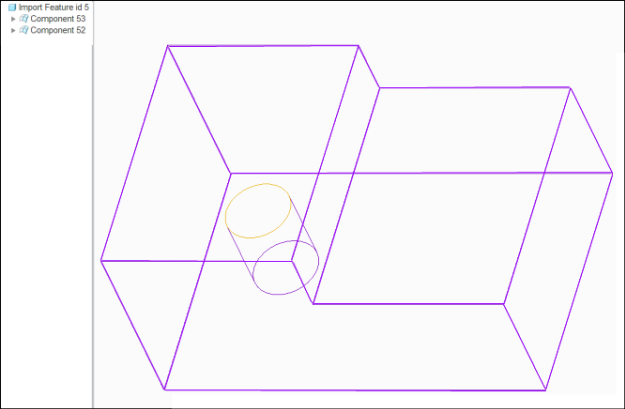
Successfully updated combine connections result in permanent geometry modifications of the quilts involved. The original state of each quilt's geometry is not remembered when an update occurs. If you delete a combine node, the two-sided boundary boundaries defined by its close connections are removed, but the geometry remains unchanged from its current state.
Example 5
This example illustrates the behavior of removing the close connection between two quilts by deleting the combine node joining the quilts after the close connection has been updated.
The hole quilt and base quilt are joined by a close connection of the combine node.

The hole is then translated in the upward direction.

The sides of the hole quilt are trimmed to match the original boundary on the base quilt, and the close connection is successfully updated.

The combine node is deleted and the close connection removed. Note that after deletion, the updated geometry of the hole quilt resulting from the previous translation is maintained.

Example 6
The following example illustrates changes to GTS Tree after deletion of a merge node.
The hole quilt is merged with the base quilt. Originally, the boundary of the hole quilt lay on the planar surface of the base quilt, so the merged geometry of the hole represents the original hole quilt’s geometry.
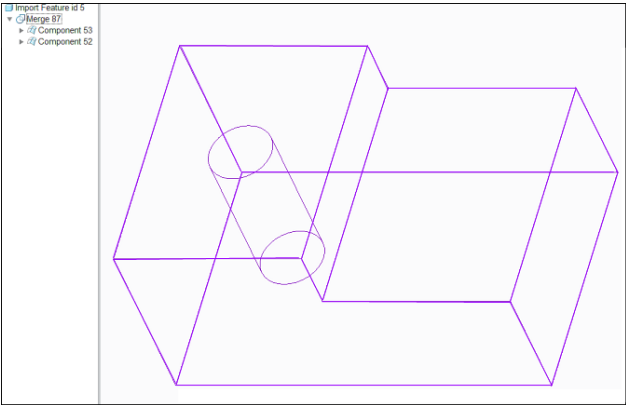
The hole quilt is translated in the upward direction.

The hole and base quilts are re-intersected and the merge geometry updated.
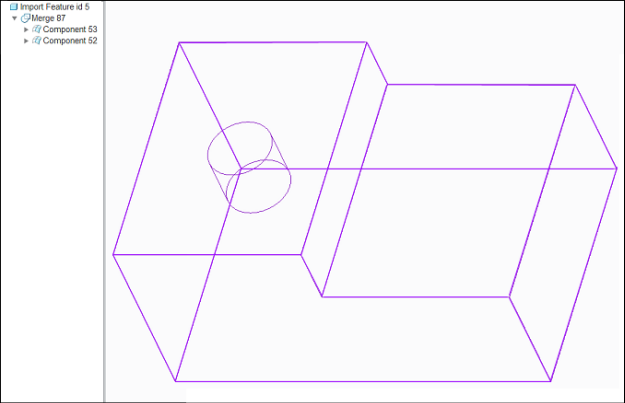
The merge node is then deleted, removing the merge connection between the two quilts. Note that the hole quilt returns to the original geometry before translation and update of the merge connection. Note the distinction between this behavior and the deletion of the combine node in Example 5.
